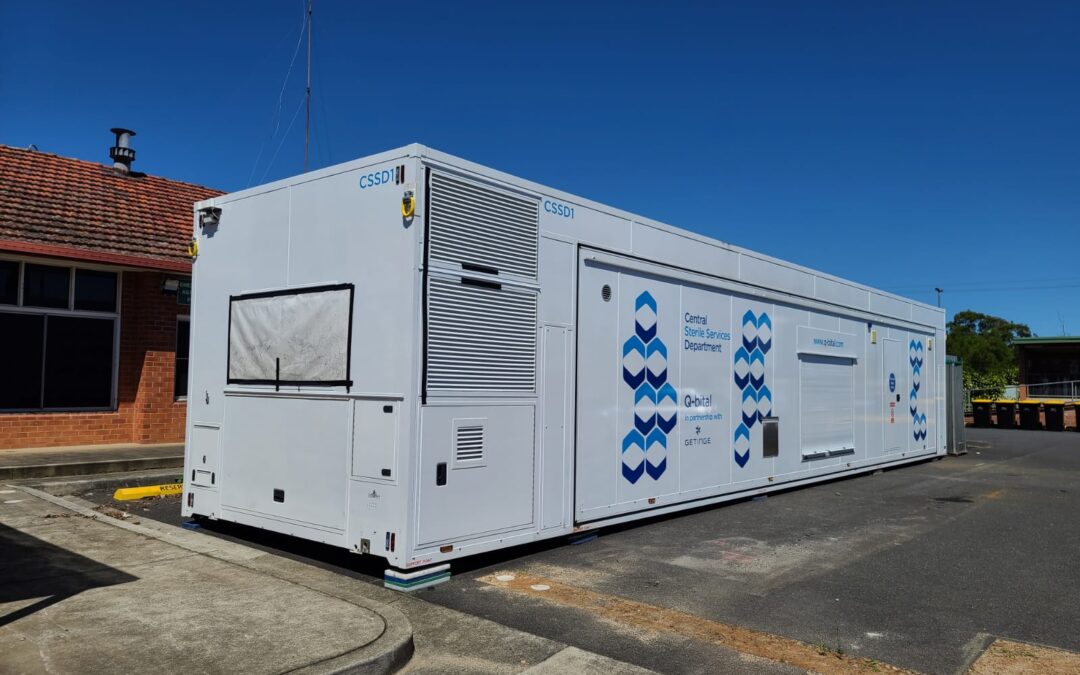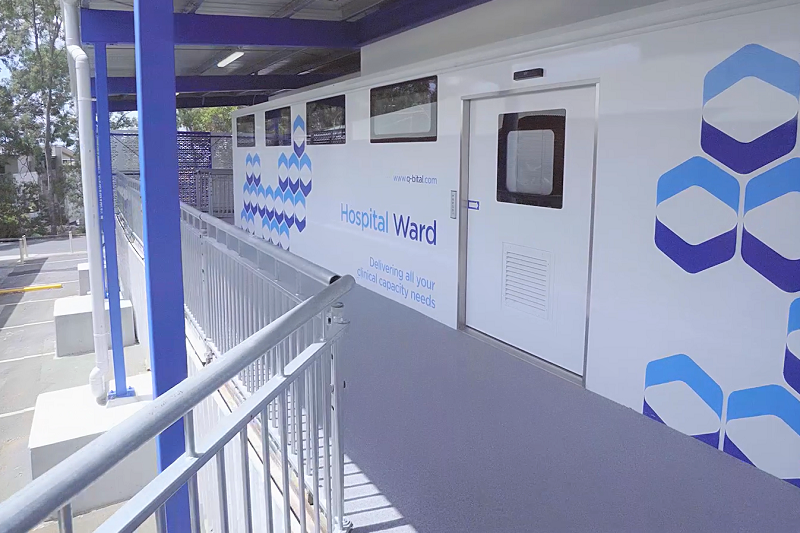Due to the nature of their round-the-clock operations, extensive air-conditioning, and specialist medical equipment requirements – and because much of our healthcare infrastructure is ageing and poorly designed for energy efficiency – most of our hospitals and healthcare facilities are notorious energy-guzzlers and water users. They use at least twice as much energy and around six times as much water per square metre than commercial office buildings.
The Case for Sustainable Healthcare
The health sector is an agent of healing yet, paradoxically, it is also a major contributor to the climate crisis – the world’s biggest health threat. Healthcare without Harm notes that, if the health sector were a country, it would be the fifth-largest emitter on the planet with a climate footprint equivalent to the annual greenhouse gas emissions from 514 coal-fired power plants.
New hospitals are being built with sustainability in mind. Adelaide’s new Women’s and Children’s Hospital and the new emergency, surgical and critical healthcare wing at Canberra Hospital will both be 100% electric.
For most existing hospitals, though, refurbishment provides arguably the best opportunity to improve sustainability as well as upgrading facilities. It’s the ideal time to reduce your carbon footprint. Mobile facilities are a sustainable option that can be rapidly deployed for both planned and emergency hospital refurbishments.
Case studies
Before examining the research on the sustainability of mobile facilities, let’s take a look at two case studies.
Planned refurbishment
One hospital needed to refurbish its outdated operating room and Central Sterile Services Department (CSSD).
Option A was to temporarily repurpose a different part of the hospital to be a short-term operating room and CSSD while building works were completed in the main facility. This would take time and money and it could be difficult to meet standards. Once the refurbished operating room and CSSD were ready, the temporary ones would be dismantled and scrapped.
Option B was to set up a mobile facility in the hospital grounds which would serve as a temporary CSSD and operating room. This would be fit-for-purpose, meeting all standards of care. This mobile facility would be:
- More cost-effective
- Up and running more quickly
- Less disruptive
- More sustainable in its construction and day-to-day energy efficiency
- Less wasteful – it could be reused rather than scrapped.
Unplanned refurbishment
When the boiler failed at a regional hospital, there was no way to process surgical equipment onsite. Looking for a solution, the hospital staff ended up making 3-hour round trips to the nearest hospital to have the surgical equipment processed there as well as postponing or relocating some surgeries. That involved many costs – time, distress, fuel and pollution through unnecessary transit. It was definitely not a sustainable solution.
As an interim solution, the hospital decided to bring in a mobile facility. This meant that surgeries and the sterilisation of surgical instruments could continue onsite without disruption. Staff hours (and costs) returned to their normal baseline. The introduction of a mobile CSSD facility was an affordable, sustainable solution that met everyone’s needs.
What makes mobile facilities more sustainable?
Several factors combine to make mobile facilities an excellent and sustainable solution to a hospital’s needs during periods of refurbishment.
Mobile facilities are constructed with less waste and fewer emissions
Construction has a significant climate impact. According to the Public Sector Build Journal, the sector accounted for 39% of energy and process-related carbon dioxide emissions in 2018.
Mobile and modular healthcare facilities are constructed off-site, bespoke to the hospital’s unique requirements. Off-site construction involves less waste and fewer emissions since materials are not being transported to the site in multiple shipments. Instead, the facility is built in a factory where it is easier to control conditions and minimise wastage. On arrival to the site, the mobile or modular facility requires only the final internal fit outs that cannot be completed before transit. Off-site construction results in reduced energy consumption, noise pollution, wastage and improved health and safety conditions.
Mobile facilities can be repurposed
The construction of temporary brick-and-mortar facilities during hospital refurbishments seems particularly wasteful since they will usually be demolished as soon as the renovation is complete.
In contrast, mobile facilities can be redeployed as necessary. They can be upscaled, relocated, expanded and repurposed to suit changing needs and can either be reused on the current hospital estate or at a different one.
Mobile facilities offer a modern environment
Mobile facilities are built to high standards, including air filtration, sterilisation systems, acoustic insulation and thermal performance. That’s rarely achieved by a temporary bricks-and-mortar build. The modern nature of these facilities can also positively impact recruitment and training and development of staff as individuals seek to work in a more modern and up-to-date environment.
Mobile facilities provide an opportunity for biophilic design
The placement of a mobile healthcare facility involves far less disruption than reconstructing part of the hospital. It means existing trees or gardens can be left undisturbed and it provides an opportunity to add biophilic touches to the surroundings of the mobile facility itself.
Biophilic design is gaining momentum for good reason. Incorporating natural elements such as plants, fresh air, natural light and views of the outside world has been shown to:
- Reduce stress
- Improve emotional well being
- Enable clinicians to be more focused
- Improve patients’ sleep
- Reduce pain, depression and fatigue
- Improve social interaction.
Staff and patients at three Finnish hospitals that used modular facilities commented favourably on the amount of natural light in the modular facilities, which they said was better than in the main hospital building. One manage who worked across multiple sites said that the modular unit was the only facility where nobody ever complained about comfort.
The benefits of sustainable healthcare facilities
Mobile healthcare facilities may be more sustainable than their temporary brick-and-mortar counterparts when it comes to hospital refurbishments. But does it all matter? Does any of it make a difference?
Yes. Over a decade where health care activity increased by 18%, the UK health sector reduced its emissions by 11% due to a program of decarbonisation led by its Sustainable Health Unit. Every step in the right direction matters.
Sustainability benefits patients and staff too. A joint report by National Australia Bank, the Green Building Council, Green Star and the New Zealand Green Building Council found that sustainable healthcare facilities:
- Are more cost effective
- Are better places to heal
- Can contribute to wider health benefits for the community
- Are better places to work
- Can contribute to national emissions reductions targets
- Are future-proofed and more attractive to investors
- Deliver accountability and credibility.
If you’d like to learn how mobile facilities can accommodate your hospital refurbishments, please contact Q-bital Healthcare Solutions.






